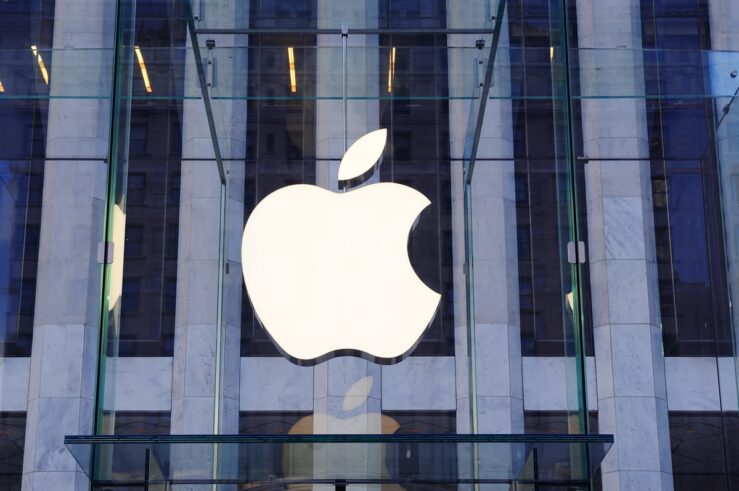Josh had a characteristically thoughtful post last week on safe harbors for loyalty and bundled discounts. I didn’t comment on the post, with which I generally agree, because I was busy writing an amicus brief (also signed by Dan Crane, Richard Epstein, Tom Morgan, and Danny Sokol) in an attempt to preserve a different safe harbor for bundled discounts. That’s the safe harbor created by the Ninth Circuit’s recent PeaceHealth decision (discussed here). PeaceHealth held that
To prove a bundled discount was exclusionary or predatory for the purposes of a monopolization or attempted monopolization claim under Section 2 of the Sherman Act, the plaintiff must establish that, after allocating the discount given by the defendant on the entire bundle of products to the competitive product or products, the defendant sold the competitive product or products below its average variable cost of producing them.
That is an eminently sensible holding. Bundled discounts — discounts conditioned upon purchasing a group of different products from the discounter (think meal deals, Internet/phone/cable bundles) — are pervasive, involve an immediate consumer benefit (lower prices), and are usually procompetitive. Like other price cuts, they should be condemned only when they have the potential to drive equally efficient rivals from the discounter’s market. With single-product discounts, we identify price-cuts that have such anticompetitive potential by asking whether they result in prices below the discounter’s cost of production; if not, they could be matched by any equally efficient rival willing to engage in aggressive price competition.
With bundled (or package) discounts, we may need to look a little harder. In theory at least, a bundled discount that results in above-cost pricing (for the whole bundle) may exclude equally efficient rivals that sell a narrower line of products. Consider, for example, a manufacturer (“MultiCo”) that sells both shampoo and conditioner and competes against another manufacturer (“SingleCo”) that sells only shampoo. SingleCo, the more efficient shampoo manufacturer, can produce a bottle of shampoo for $1.25. It costs MultiCo $1.50 to produce a bottle of shampoo and $2.50 to produce a bottle of conditioner. If purchased separately, MultiCo charges $2.00 for shampoo and $4.00 for conditioner ($6.00 total), but if the consumer purchases both products at once, MultiCo will sell the combination for $5.00. That $1.00 bundled discount results in a price that is $1.00 greater than MultiCo’s cost for the two products ($4.00). Nonetheless, the above-cost bundled discount could exclude SingleCo. SingleCo could stay in the market only if it charged no more than $1.00 for shampoo (so that a consumer’s total price of SingleCo’s shampoo and MultiCo’s conditioner would not exceed $5.00, MultiCo’s package price), but SingleCo’s marginal cost of producing shampoo is $1.25. Accordingly, MultiCo’s bundled discount could eliminate SingleCo as a competitor even though (1) SingleCo is the more efficient producer and (2) MultiCo’s discounted price is above its cost of producing the bundle. The upshot is that we may underdeter if we immunize all bundled discounts that result in an above-cost price for the entire bundle.
But there’s no way the more conservative safe harbor announced in PeaceHealth could immunize anticompetitive discounts. If a challenged bundled discount doesn’t result in below-cost pricing after the entire amount of the bundled discount is attributed to the product or products the defendant discounter sells in competition with the plaintiff, then the plaintiff — if it’s as efficient as the defendant — could meet the defendant’s discount by lowering its price to some above-cost level (or to cost). For example, if MultiCo were to sell its shampoo/conditioner package for $5.50 (50 cents less than the aggregate price of the products sold separately), any equally efficient shampoo producer (producing at $1.50 per bottle) could compete by lowering its price to its cost: A customer could buy that company’s shampoo ($1.50) and MultiCo’s conditioner ($4.00) for the same total price as MultiCo’s bundle.
In short, any plaintiff driven out of business by a discount that passes muster under PeaceHealth’s “discount attribution” test would have to be either (1) less efficient than the discounter, or (2) unwilling to engage in vigorous price competition. Antitrust shouldn’t thwart consumer-friendly discounts in order to create price umbrellas for inefficient competitors or to indulge rivals that won’t lower price to the level of cost. Accordingly, no plaintiff should prevail on a bundled discount challenge unless it can make the discount attribution showing required by PeaceHealth.
In its appeal, Masimo is arguing that the court should permit it to attack Tyco’s bundled discounts on a de facto exclusive dealing theory even though it can’t prove that Tyco engaged in below-cost pricing under PeaceHealth’s discount attribution test. Masimo (along with supporting amici the Consumer Federation of America and the Medical Device Manufacturers Association) contends that PeaceHealth’s safe harbor applies only in “price competition” cases, not in cases involving de facto exclusive dealing.
That makes no sense. Masimo’s de facto exclusive dealing theory is that Tyco’s bundled discounts — though involving no express promises of exclusivity (otherwise the exclusive dealing wouldn’t be “de facto”) — were so successful that they had the effect of inducing purchasers to buy exclusively from Tyco, thereby foreclosing Masimo from the market. But this just means that Tyco succeeded in attracting customers (usurping them from Masimo, among others) via low prices. Because low pricing is the very mechanism by which any “exclusivity” (and, hence, any market foreclosure) is achieved in a de facto exclusive dealing claim based on bundled discounts, every such claim is ultimately a “price competition” claim, falling squarely within PeaceHealth’s ambit.
The Ninth Circuit did the right thing in PeaceHealth. It provided businesses with much-needed guidance by recognizing a conservative safe harbor from which anticompetitive harm cannot flow. Masimo’s position threatens that safe harbor. It would allow plaintiffs to evade the procompetitive protections of PeaceHealth by attaching a new legal label (de facto exclusive dealing, de facto tying, unspecified “exclusionary conduct”) to challenge otherwise indistinguishable conduct. Potential defendants, knowing that plaintiffs may be able to avoid summary disposition of bundled discount claims by creative labeling, would likely respond by avoiding otherwise procompetitive bundled discounts (and the prospects of an adverse treble damages verdict) altogether. Consumers, who generally benefit from bundled discounts, would suffer.
If antitrust is to be a sensible enterprise, the question should not be “What label has plaintiff affixed to its claim?”, but rather “Is the behavior of which plaintiff complains likely to impair competition?” When it comes to bundled discounts — which generally reflect (or promote) cost-savings and which provide an immediate benefit to consumers — there can be no anticompetitive harm if there are no express exclusionary covenants and the competitive product is priced above the defendant’s cost once the entire discount is attributed to that product. Accordingly, the Ninth Circuit should decline Masimo’s invitation to turn the law of bundled discounting into the antitrust version of Greek mythology’s many-headed Hydra. Doing so would simply chill bundled discounts, to the detriment of consumers.




